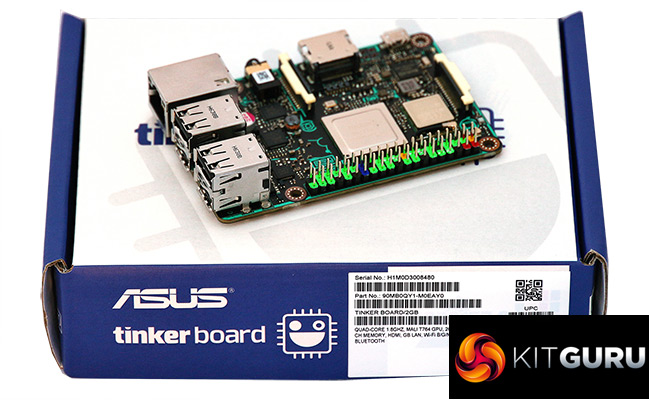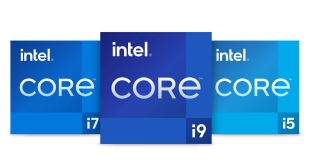The ASUS Tinker Board is a promising bit of hardware, and it's great to see the increased interest in low-cost computers aimed at encouraging the budding engineer or product designer. Looking at the earliest reviews of the Tinker Board, it was hampered by not having a dedicated site where you could find the details required to set it up. Now that's here, the prospect is much more competitive.
There is no doubt that the Tinker Board hardware is much more powerful than the Raspberry Pi 3 Model B, and in fact one of the most powerful of its type. The Android TinkerOS is interesting, but until it includes the Google Play Store it's not going to be that useful, even if it is a slick and capable barebones OS. The Debian OS comes in a rather limited initial form, but you can add a wide range of applications to make this a really useful little computer for very little money.
The GPIO APIs further extend the functionality, but this area still feels very rough and ready, and you will need a fair bit of knowledge already to get anywhere, particularly with the C and Python APIs. So the Tinker Board is not quite ready for teaching. The Raspberry Pi's huge existing community and resources gives it a massive head start in this respect. But that doesn't count the Tinker Board out at all. It's quite a bit more expensive than a Pi, but a lot more powerful, and if you're looking for cheap configurable computer with GPIO and enough grunt to play 4K video without breaking a sweat, the ASUS Tinker Board is well worth buying.
Discuss on our Facebook page, over HERE.
Pros:
- Choice of Android or Debian Linux operating systems.
- Much more powerful than a Raspberry Pi 3 Model B.
- 40-pin GPIO header for attaching input and output devices.
- 15-pin DSI and CSI headers.
- Decent 3D graphics acceleration.
- Hardware acceleration for playing video up to 4K.
- Gigabit Ethernet LAN.
Cons:
- More expensive than a Raspberry Pi 3 Model B.
- GPIO API support still in its infancy.
- TinkerOS Android sorely needs to come with the Google Play Store pre-installed.
KitGuru says: The ASUS Tinker Board delivers much more powerful hardware than a Raspberry Pi. Although its tinkering abilities still have some way to go, there's lots of potential here for makers and budding product designers, as well as anyone who just wants a tiny and cheap but capable Linux computer.
 KitGuru KitGuru.net – Tech News | Hardware News | Hardware Reviews | IOS | Mobile | Gaming | Graphics Cards
KitGuru KitGuru.net – Tech News | Hardware News | Hardware Reviews | IOS | Mobile | Gaming | Graphics Cards





Arrr… Raspberry Pi 3 top result compared https://browser.geekbench.com/v4/cpu/compare/3061317?baseline=5408809 Not best result for RK3288. Google’s OP1 actually RK3288 also https://browser.geekbench.com/v4/cpu/compare/5060917?baseline=5408809 better performance… Ho… Ho…
See https://www.ossblog.org/installing-google-play-store-asus-tinker-board/ , where Steve Emms published an article on performing the Googleplay installation back in May 2017 (well over 7 months ago now, back about 2 months after I first received my Tinkerboard).
The only real problem I’ve found with the Tinkerboard, from the perspective of a system developer, is that the Android image is not certified properly to allow it to use HDCP, which negates it’s ability to run apps that use HDMI copy-protection on hardware that doesn’t support it –such as Comcast’s Xfinity app, used to watch cable channels over IP.
Everything else I’ve ran on this board, under Android, has been blazing fast –including Kodi 17.6.
I took a good long look over Asus’s release of Debian (called TinkerOS), and realized very quickly that their in-house Linux dev team were clueless about making a solid Linux. I replaced that install with Armbian and it worked beautifully. There were no real issues worth mentioning –at least not anything that the average Linux user would be surprised by or have any trouble working around.
I’ve kept my Tinkerboard running on Android, with Googleplay, Youtube, and several other GAPPS automatically updating correctly since May 20th when I did the final build for my board. Since I launched that system, it’s been paired with a 23″ Dell touch screen (w/ 10-pt multitouch), and works for us like a giant tablet. Its roughly twice the speed of the RPi3 on just CPU/ram-speed alone, and combined with Gbit eth0, this is one of the fastest ARM based boards I’ve ever used.
Personally, I’d recommend this board to anyone with the experience to know what to do with it. For those that aren’t quite there yet, spend more time with RPI3 boards and Linux on x86/x64; this will help you gain the troubleshooting skills you’ll need for working with these sorts of environments.
Right now, the Tinkerboard is my personal board of choice for high speed embedded projects, but I’m not depending on Asus to supply me with OS code, so that may make quite a bit of difference in my case –but really, that’s how RPi boards are too… the best OS image releases tend to be 3rd party images, or the ones built by experts for their own projects. In terms of real world performance (rather than artificial results generated from simulated workloads), I’ve had no issues with mine at all.
Oh, and Eleduino makes some great all-aluminum cases that fit both Tinkerboard and RPi2/3; I nailed down 3 of them, and used 1 of the 2 I ordered in Piano-black for my Tinkerboard. Surprisingly, the black cases were cheaper ($13) compared to the anodized (silver) aluminum models by $5 ($18 for the silver cases), but they worked interchangeably and shed heat like a big heatsink so I’ve needed no fans at all.
That was an awesome review. Thank you.
Thanks for your detailed comment! I did try the Emms Google Play install, but it didn’t work. Not sure what I was doing wrong. It actually completely borked my Android install so I had to revert to the original image again.
Seems the Android version makes a big difference.
It *wasn’t* an easy process, at all. But I think in that original discussion I’d posted, there were notes further down that allude to the debugging work we did to get it working right on a single installation run. I’m at work now, but I’ll be home soon… and will try to remember to look over that info, gather it together into a concise document and publish it somewhere as a howto.